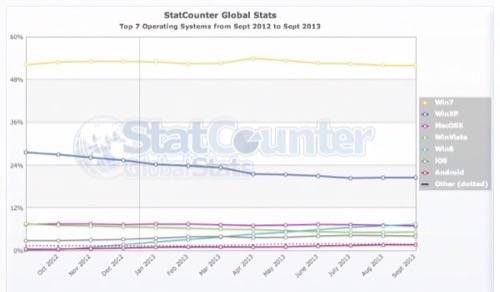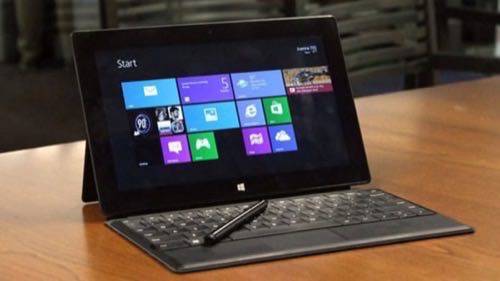Windows 8.1 is now ready for general availability, downloadable for users across the world. The new update comes with a wealth of enhancements and users of Windows 8 are encouraged to download and install the free update to Microsoft’s flagship operating system.
Among the noted changes to the OS: improved help and tooltips functionality, more comprehensive search, the ability to set applications as default, viewing more than two open applications on the screen at once and the much-ballyhooed return of the Start menu button to the “classic” desktop interface of Windows 8.1.
Old apps, like Photos and Music, have been enhanced with new designs and features. But for some apps, such as Mail, the changes don’t go far enough, with a noticeable absence of support for POP3 email.
Overall, most early reviewers of Windows 8.1 agree that the update fixes a lot of problems that came with the release of the Windows 8 operating system. There are still some to go but committed users of Windows 8 should find the enhancements well worth the upgrade time and energy.
The End Of Windows XP: Where Do Users Go?
The fundamental dual-nature of the operating system and the increasingly recognizable tile-based Start homescreen may still be holding back adoption of Windows 8 even as the ancient Windows XP end-of-life deadline of April 8, 2014 looms like a U.S. congressional conflict.
Microsoft is hoping that as XP users migrate to a new operating system, they will choose Windows 8 as their next destination. This would make sense, given consumer predilections for getting the latest and greatest.

The numbers, however, can tell a different story. According to StatCounter, the market share for Windows XP has been steadily dropping over the past year, down from 27.64% in Sept. 2012 to 20.59% one year later. But by far and away the biggest holder of operating system market share is Windows 7, not Windows 8.
Windows 7 is still at a majority of the installed base that StatCounter monitors, with 51.98% of the market—only a tiny smidge under where it was in September last year at 52.2%. The trend does seem to be going down for Windows 7 use, especially since April 2013, but the curve is very shallow.
Meanwhile, Windows 8 use is on the rise, but at 7.46% of the market, it has only just passed the 6.98% mark that Mac OS X had in Sept. 2013.
Business Korea has noted this trend, which is even more exaggerated in South Korea’s own market share figures. In May 2013, just after the announcement of Windows XP’s end of life, they reached out to Microsoft Korea for comment.
An MS Korea associate said, “The number of Windows 7 users increased because users upgraded their OS just in time around the XP support termination announcement.”
When asked about the still-low domestic figures for Windows 8, Microsoft Korea confirmed what many had already suspected.
Regarding this, an MS Korea associate said, “Compared to other versions, Windows 8 especially depends on the hardware,” and added, “There are not a lot of devices which can utilize the Windows 8 touch feature, which is why the market share is relatively low.”
Made For Touch: Leaving The Legacy Behind
Microsoft’s own employees admit the one big drawback for Windows 8: this is an operating system designed for touch screens, which many legacy PCs don’t have yet. This means Windows 8 market penetration is reliant on brand-new laptops and PCs that do have touch-screen capabilities, or the sales of mobile devices like tablets and smartphones.

In a sense, this is exactly what Microsoft has planned for itself. It wants to be a “Devices and Services” company and, by golly, they’re doing it. The problem is, their end users still need an operating system that works on the computers they already have and will continue to use to get work done.
Love it or leave it, at least two generations of users have grown used to the desktop paradigm that Windows and its competitors have used on PC platforms: the windows, menus and dialog boxes that depend on the mouse-and-keyboard combination. Windows 8, in trying to change so radically to mimic the success of the iOS and Android operating systems, is pushing desktop users who rely on familiar interfaces to get work done in the back of the operating system with the classic desktop interface that gets little fanfare and (from reviews of Windows 8.1), little love from Microsoft.
No wonder Windows 7 is still popular: it represents the workspace where people can get things done. Consumers recognize that and IT departments sure know it too. And that is where Microsoft will see the most resistance to Windows 8 as businesses large and small avoid the platform in order to keep their workers on familiar ground.
In a way, Microsoft laid some of the groundwork for this problem themselves. In the last decade, when the Linux operating system was eyed as a potential competitor to Windows, one of the the lines of fear and uncertainty that Microsoft trotted out was that re-training employees to use a Linux-based operating system would be too hard and expensive.
Looking at the radically different interface of Windows 8, it’s impossible to think that re-training really would be inexpensive for business adopters of Windows 8, since there is little with which users can be familiar in the new interface.
Water washes away anything, over time, and eventually, as a new generation of smartphone and tablet users figures out how to produce content and get work done on touch-screen devices, operating systems like Windows 8 will be accepted. This will not be an easy transition, though, and Microsoft will probably have to start giving a lot more love to the classic side of Windows 8 to attract business and consumer users faster.
Windows 8.1 still doesn’t show that kind of love.
Lead image courtesy of Nabor Garrido via CC.





















